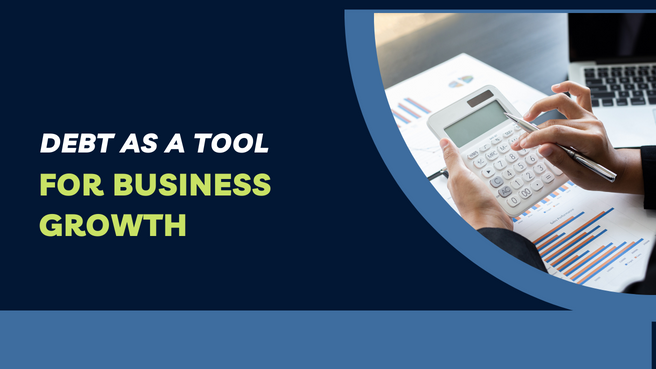Index investing is a hands-off investment approach favoured by long-term goal-oriented investors. It involves creating a portfolio of assets that closely replicates a specific index or financial market. By investing in index funds, investors can own fractional shares of numerous companies, all bundled into a single fund. Over longer periods, index funds have demonstrated their ability to outperform actively managed funds, making them an appealing choice for many.
Moreover, index funds are more cost-effective compared to their actively managed counterparts. They also provide the advantage of broader diversification. The beauty of index investing lies in its passive nature; it doesn’t demand the active management of individual stocks. As a result, investors can adopt a more passive investing approach, saving time and effort that would otherwise be spent continuously monitoring performances.
If you want to know more about index investing, then just keep reading this post.
What is Passive Investing?
Passive investing, also known as index investing or index tracking, is an investment strategy in which a fund’s assets are allocated to replicate the performance of a specific designated index. While the objective of active investing is to outperform an index, passive investing aims to match the index’s performance without the risk of significant underperformance.
Passively managed funds typically come with lower management fees compared to actively managed funds, which has contributed to their growing popularity among investors. These funds offer a convenient way to invest in an entire market or sector through a single trade. As the demand for passive investing has risen, index providers have introduced a wide range of different indices enabling investors to invest cost-effectively in specific sectors (such as energy or healthcare) or themes (like value or ESG – Environmental, Social, and Governance).
Index Investing Explained
Index investing is a trading technique that involves using index funds or indices to construct a portfolio. It is a passive investment strategy that enables investors to build wealth with lower expenses. Index funds can take the form of mutual funds or exchange-traded funds (ETFs) and are created by financial firms to replicate a specific financial index. When an investor purchases an index fund, they are essentially buying shares of stocks from companies included in that particular index.
Numerous financial indexes exist worldwide, and several popular ones are readily available for index fund investment, including:
-
S&P 500
-
Dow Jones Industrial Average
-
Nasdaq Composite
-
The Wilshire 5000
-
S&P Mid-Cap 400
While most index funds hold shares of all the stocks in the index they track, some funds may include only a selected subset of securities from the index.
Index investing is frequently utilized in retirement savings strategies. Over the years, index investing has demonstrated its ability to closely match the general performance of the stock market, making it an effective buy-and-hold strategy.
Methods of Index Fund Investments
Investing in index funds is remarkably straightforward, and investors have the option to choose between active and passive index investing based on their convenience, knowledge, and time availability. There are two ways to invest in index funds: through index mutual funds or ETFs.
The key distinctions between the two are as follows:
-
Mutual funds
In this approach, a company pools together money from multiple investors to purchase assets. These mutual funds are not publicly traded on the stock market and are bought directly from the fund. Each investor owns a share of the fund, and mutual funds require active management to try to outperform the market. As a result, they often come with higher fees compared to passive index funds. However, they offer significant diversification, liquidity, and cost-effectiveness.
-
Exchange-traded funds (ETFs)
ETFs are bundles of assets that can be publicly traded on the stock market. They are generally more cost-effective and accessible than mutual funds. ETFs only require passive management and provide better liquidity than mutual funds. They are also comparatively cheaper.
To replicate a financial index, one can create both ETFs and Mutual Funds. When deciding to invest, individuals can research various indexes to choose the one that suits them best.
To invest in an index fund, one can open a brokerage account. Alternatively, for mutual funds, it may be possible to create an account directly with the company managing the fund of interest.
Passively Managed Index Fund Explained
If a fund’s managers are frequently altering the investments and reallocating capital, it is considered actively managed. In contrast, passive funds typically revolve around a specific stock index, and their composition changes only occasionally. When a stock is removed or replaced in the index, the fund managers adjust accordingly.
In essence, a passively managed index fund adheres to the index it tracks without actively pursuing the latest trends. The fund’s managers ensure that the underlying investments always align with the components of the tracked index.
Passively Managed Index Fund Risk
Stock prices, as indicated by stock market indexes, can exhibit significant and rapid fluctuations over short periods. These unpredictable movements are a common source of risk in investing, even for passively managed index funds, which are not immune to financial losses.
The core concept of risk in investing lies in the possibility that an investment may decrease in value. When purchasing a stock, there is uncertainty regarding whether it will appreciate or depreciate in worth. Passively managed index funds are structured to mitigate the level of risk an investor faces. This is achieved by tracking or investing in stocks that are selected and included in an index by knowledgeable investors and finance professionals.
Nevertheless, reducing risk does not equate to eliminating it entirely. Even passively managed index funds can experience declines in value due to fluctuations in the market.
Investing in a Passively Managed Index Fund
Investors often accept index funds as lower-risk, long-term investments based on their underlying assets’ historical performance. Some investors believe long-term investing is more risky than short-term; others believe the opposite. Others prefer to mix both strategies.
Many financial advisors or experienced investors suggest taking more risk when you’re younger because you have more time to recoup any losses. When you’re older, they advise taking less risk. These beliefs lead to five basic concerns about investing strategies:
-
The long-term might be risky.
-
The short-term might be risky.
-
Mix short- and long-term strategies.
-
High risk is better when you’re younger.
-
Low risk is better when you’re older.
How can you address these concerns with a passively managed index fund? You could create a portfolio of multiple index funds that address each issue. If you were on the younger side, for instance, let’s look at how you could passively invest and allocate a 100% stock portfolio across various index funds. This is also known as asset allocation. Your mix could look like this:
-
30% S&P 500 index fund: Low risk
-
10% Mid-cap index fund: High risk
-
10% Russell 2000 or small-cap index fund: Highest risk
-
20% Large-cap international index fund: Low risk
-
10% Emerging markets index fund: Highest risk
-
10% International small-cap index fund: Low risk
-
10% Real estate index fund: High risk
Bonds, such as U.S. Treasuries or corporate bonds, are often accepted as low-risk investments. Bond index funds also exist. As you age, you can reduce the stock index funds percentage and increase your percentage allocation to bond index funds. This can reduce the amount of risk in your portfolio and maintain its overall value.
Is Index Investing a Great Choice?
There are numerous benefits associated with index investing. It offers improved diversification, greater liquidity, and excellent affordability. Over time, it can generate steady and reliable returns with minimal risks. For beginners in trading, it is widely regarded as one of the most intelligent investment strategies.
Author Bio: Andrea Ollero, a writer and market analyst, has 5 years of expertise in writing beginner-friendly trading techniques, tutorials, and advice. Also, she suggests FP Markets as the top broker for trading CFDs and forex.


















